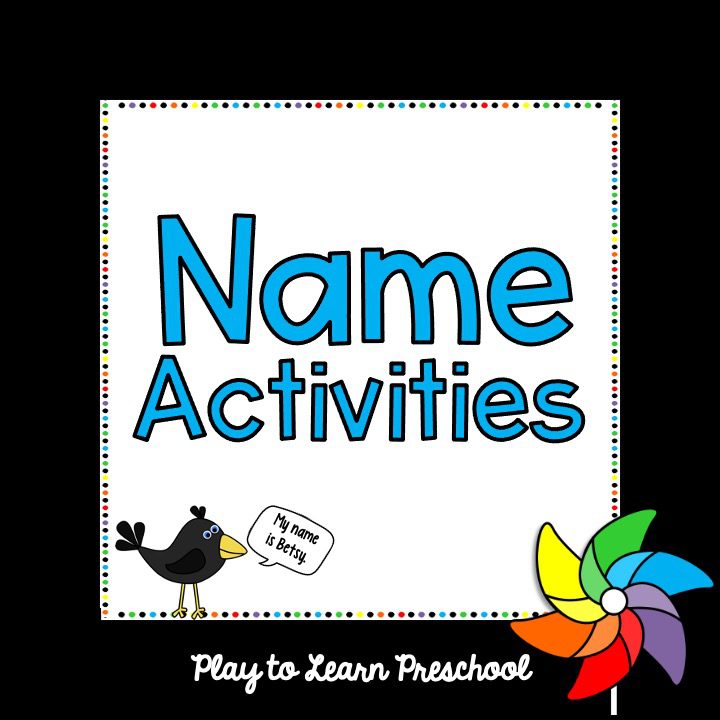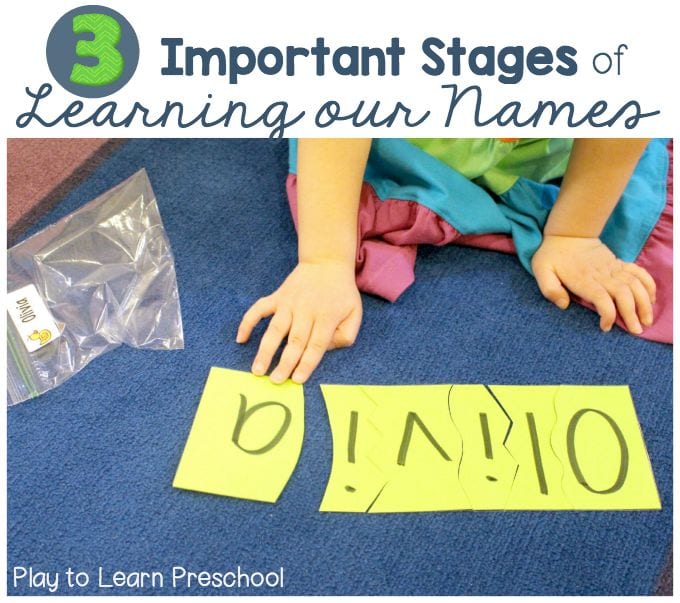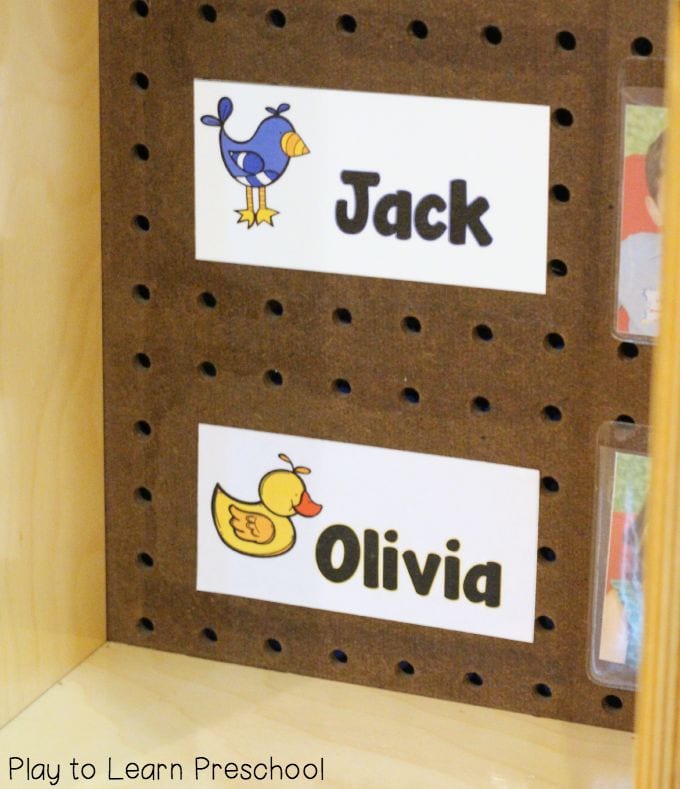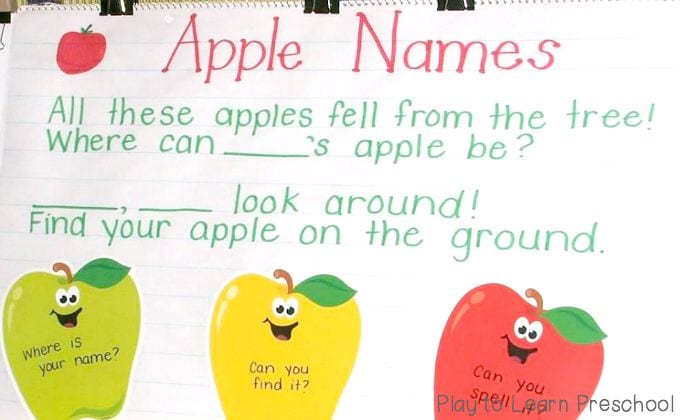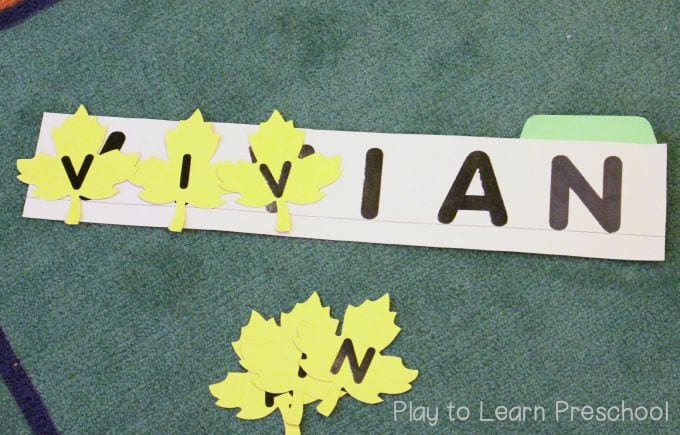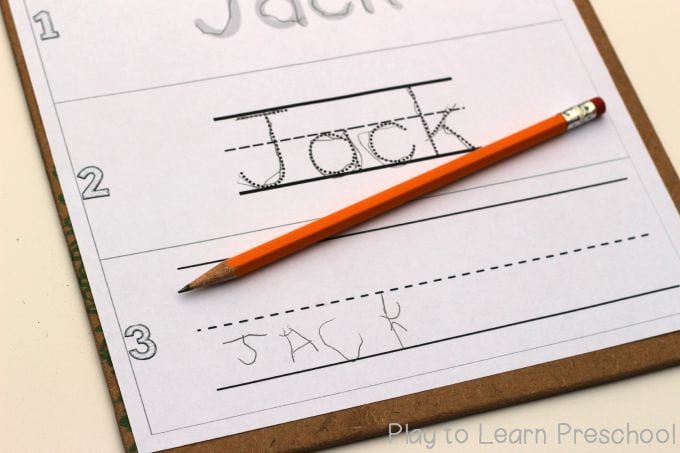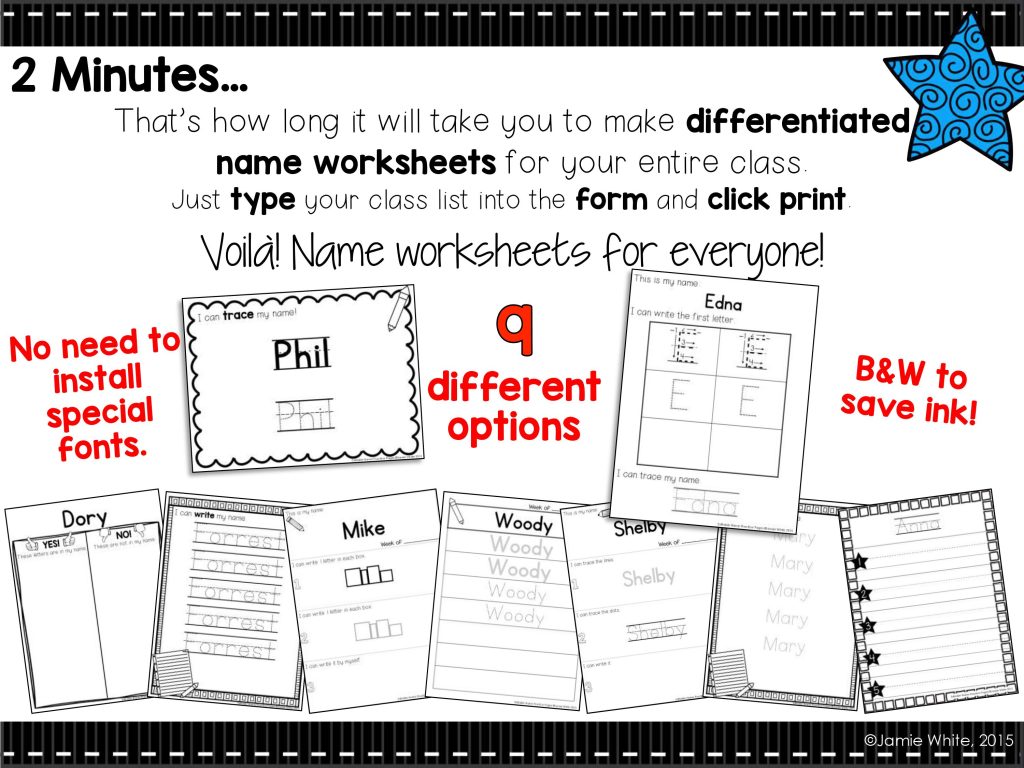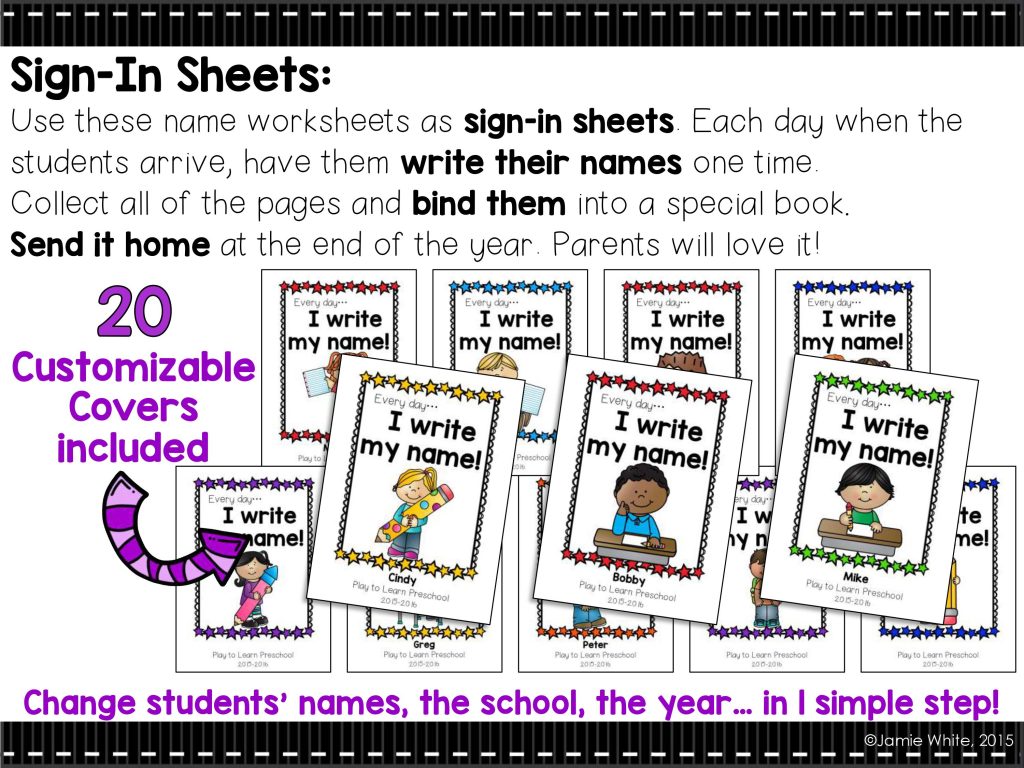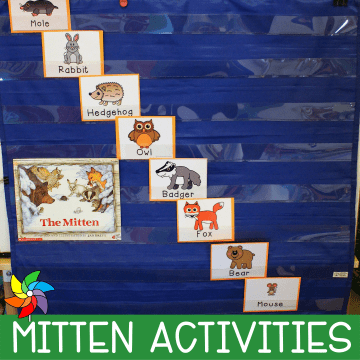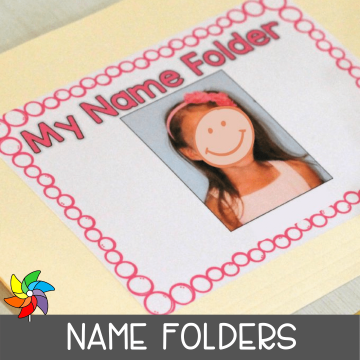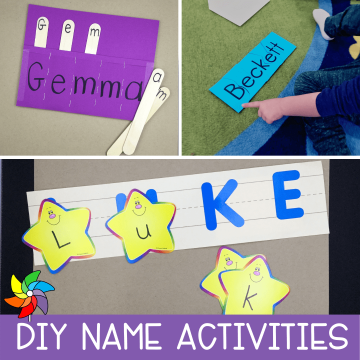Learning our names is the springboard for literacy learning in preschool! Children’s names are the most important words to them, and learning them leads to all other types of learning. When we talk about teaching children their names, it is important to consider these three stages.
Recognization
The first stage of learning names occurs when children start to recognize them! Young children begin to recognize the shape of their initial letter and often identify that first letter as “MY NAME!” They might find that initial letter in other places (separate from their names), point to it and say, “Look! There’s my name!” even if it is just the one letter.
In preschool, we can do lots of things to foster children’s recognition of their names. We label everything (lockers, change of clothes cubbies, snack chairs, carpet squares, folders, attendance chart, helper chart, and the alphabet wall) with their names and pictures, so that they begin to claim ownership of that very important word!
We use circle time as an opportunity to practice recognizing not only the child’s own name, but the names of all the classmates as well. This is one of our favorite circle time songs for September. We write the students’ names on apple cutouts and spread them all over the carpet. Then we repeat the verse for each child. They love to find each other’s apples!
With repeated exposure and practice recognizing each other’s names, the children begin to identify letters. Sarah and Shawn might have a difficult time figuring out which name is theirs because of the shared initial letter and close appearance of the other letters, so we just keep working on it noticing similarities and differences. Joshua might notice that, “Look! I have Olivia’s O in my name.”
Find this activity and more right HERE:
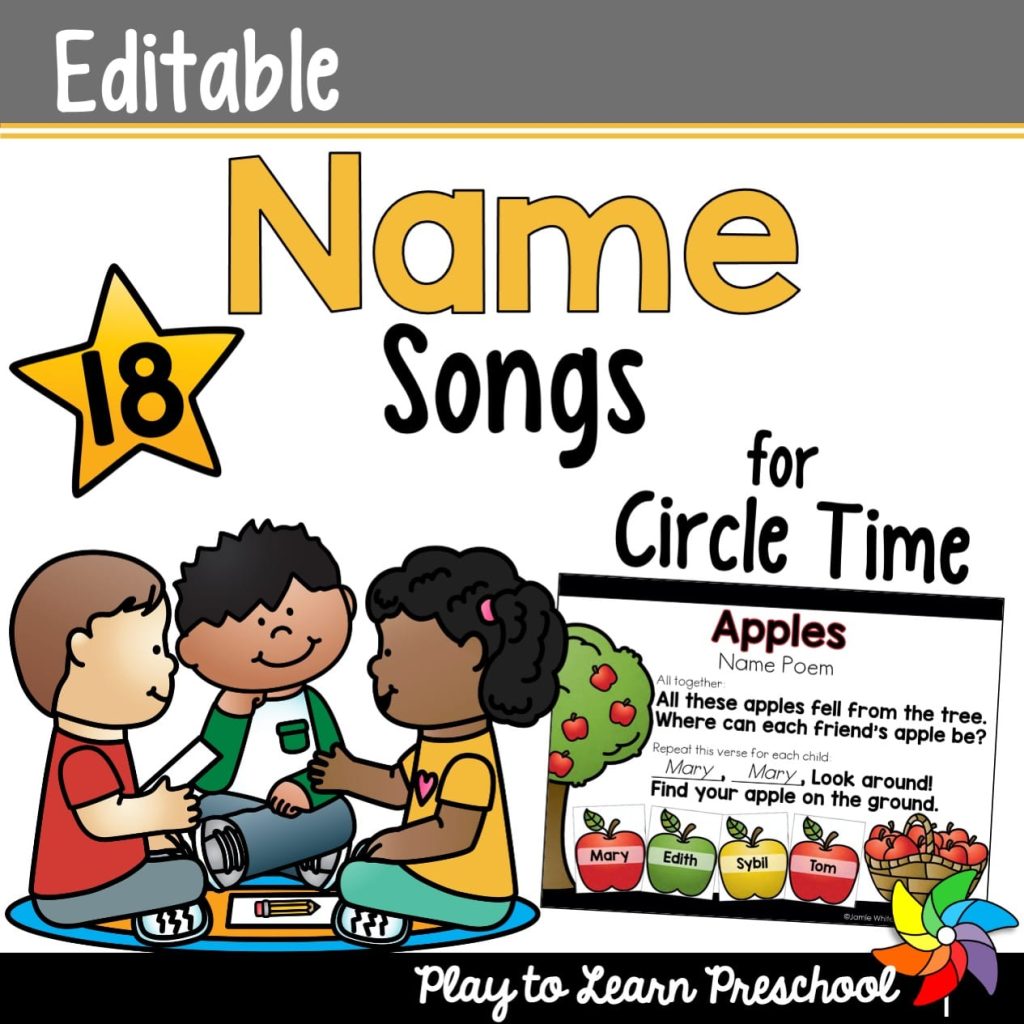
Spelling
The next step, after children are able to recognize their names is to begin to spell them orally. We practice this in many ways. A child might be able to recite, “E-T-H-A-N” without seeing it written down. Then they will begin to notice each letter. We provide a name activity like this one each morning for our students to practice.
We practice with both capital letters (for all the reasons I wrote about in this post), and we also practice matching capitals to lower case like this:
Writing
When the children are comfortable with recognizing and spelling their names, the next step is to work on writing them. Often these steps overlap and work in conjunction with each other! We give our children lots of opportunities to write their names with sidewalk chalk, paint, markers, in salt trays, etc. They are also work on strengthening their hand muscles and refining their fine motor skills. Our older Pre-K students (less than 1 year to kindergarten) also sign in their names each morning. It’s such a rewarding way to keep track of their progress.
When children begin to write, they often use what they already know about names (from learning to recognize their own name and their friends’ names and from learning to spell them). For an example, the first time Leah write her name (with sidewalk chalk in the driveway), she verbalized her thinking.
“L is for Leah.
L-E… E is for (my brother) Evan.
L-E-A… A is for (my best friend) Anna.
L-E-A-H… H is for (my baby-sitter) Holly.
Look!! I wrote my whole name.”
Learning about names is an essential part of learning about letters and literacy in preschool. Practice recognizing, spelling and writing those names in a variety of fun and playful ways!
Try these EDITABLE NAME PRACTICE PAGES for your students who are learning how to write their names. You just type in your class list and print customized, differentiated name worksheets for each child. So quick and simple!
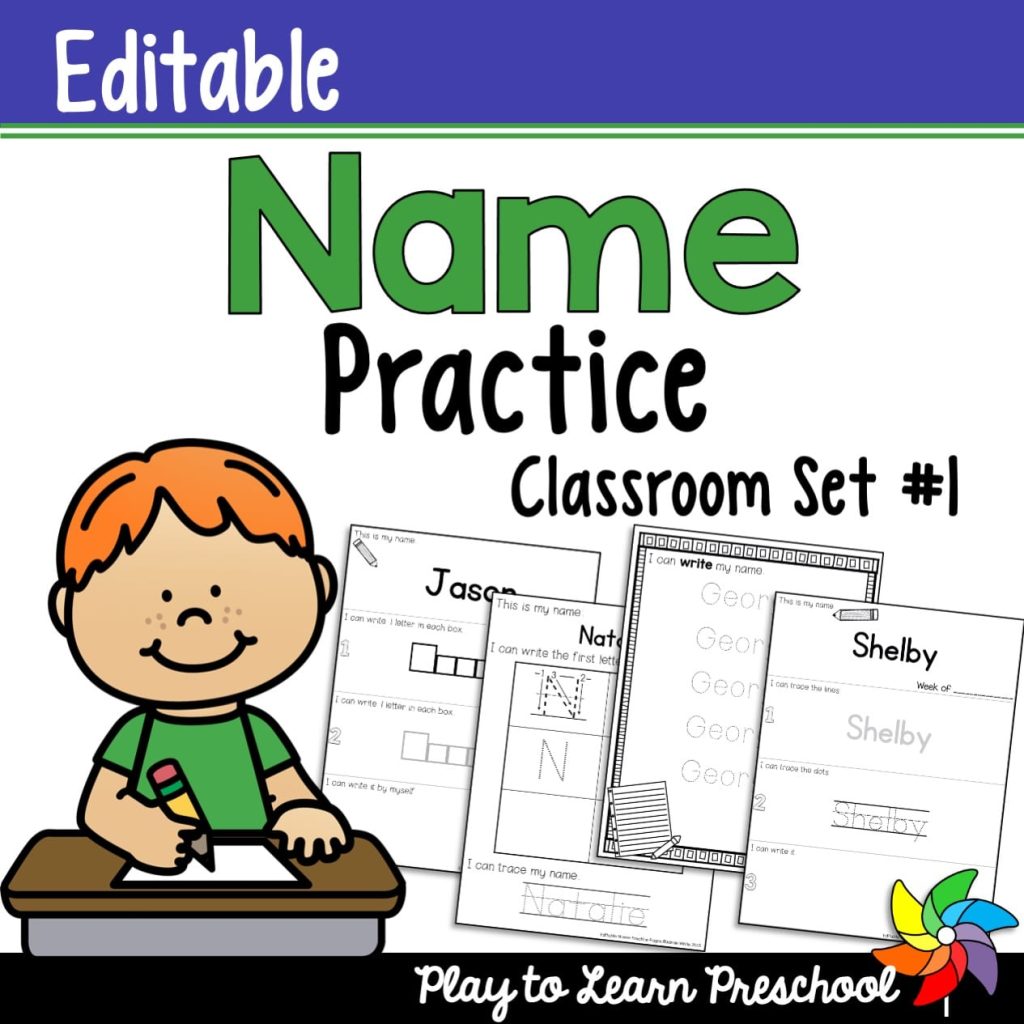
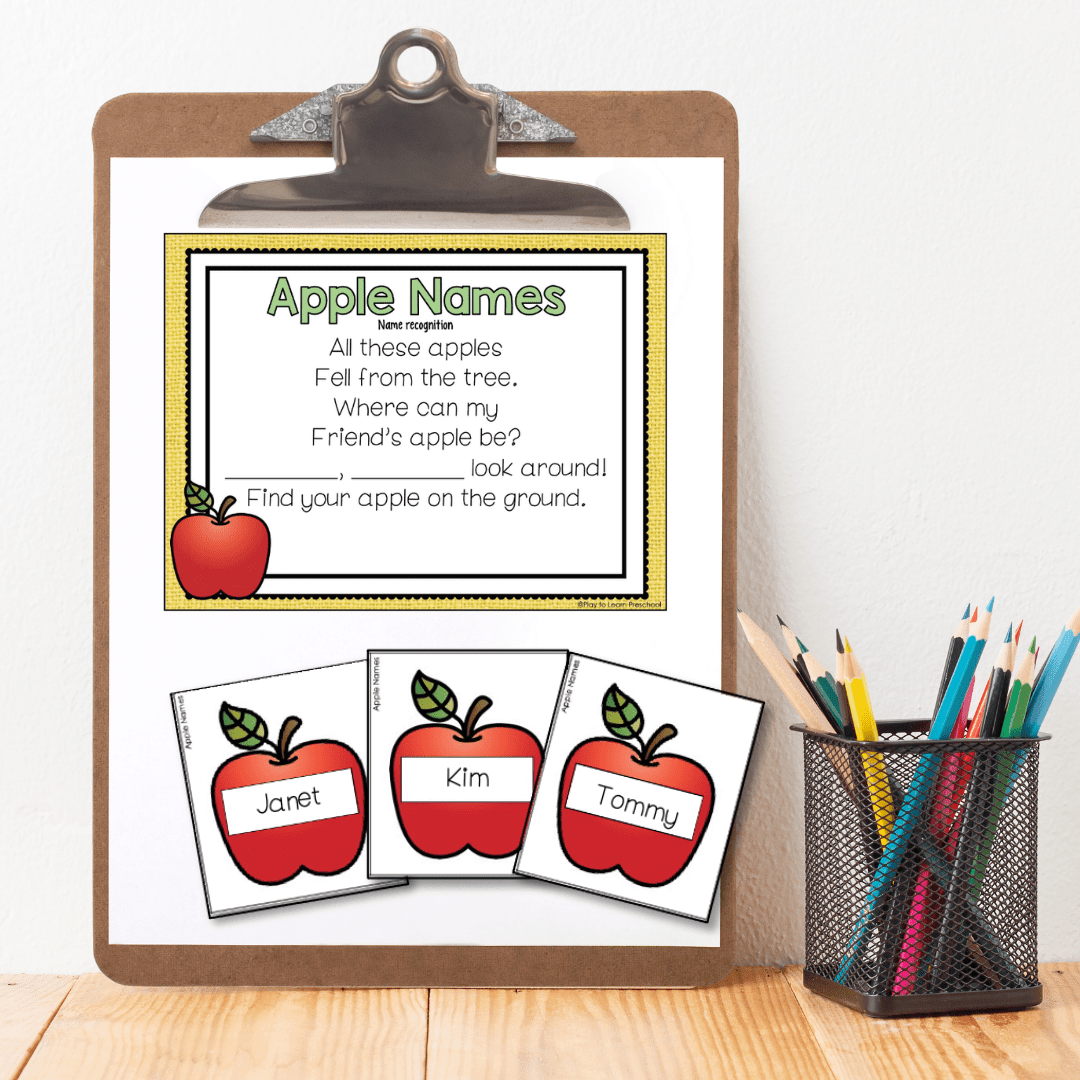
FREE Name Bundle!
Enjoy Free Name resources perfect for your preschoolers!
After you subscribe, you will be redirected to the FREE Name Resources. We respect your privacy. Unsubscribe at any time.
Follow Play to Learn Preschool’s board Literacy: Name Games on Pinterest.
